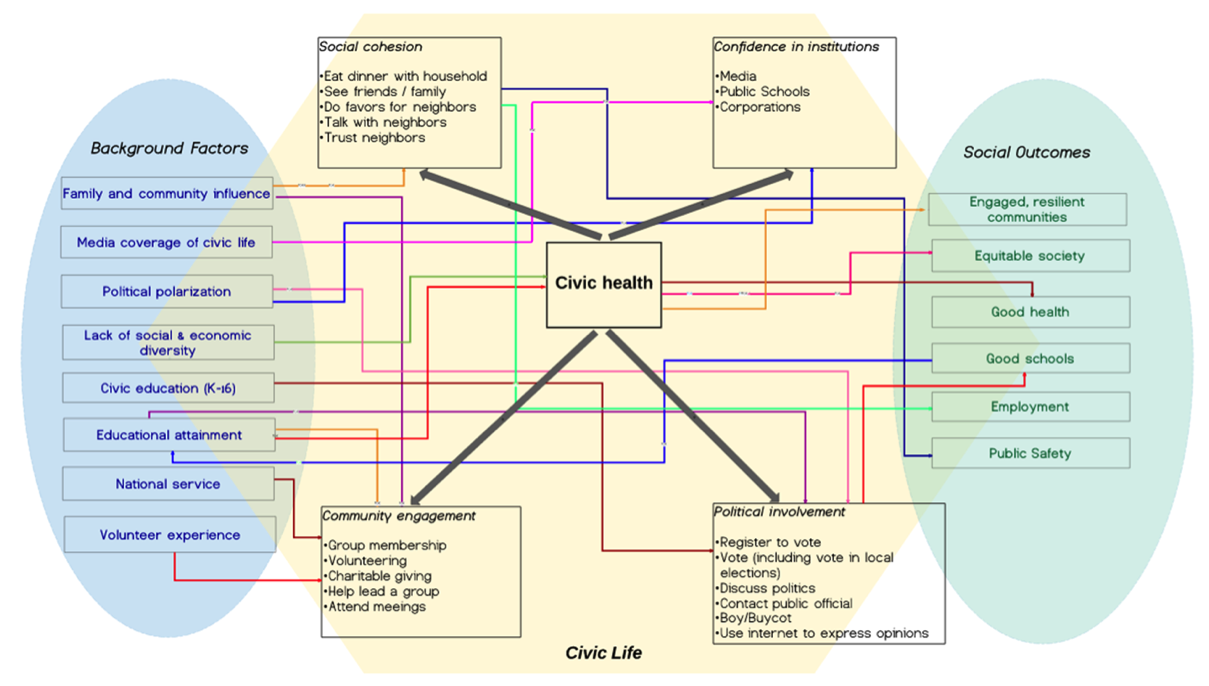This year’s conference will be interactive; we will think together about what civic life in America would look like if it strove for equity, diversity, and inclusion. The map below is one way to look at our civic health. It’s neither the perfect nor the only visualization, but it is a starting point for conversation.
On the left are factors that may affect civic life, for better or worse. In the middle is “Civic Health” as it has been measured by the National Conference on Citizenship (NCoC) and its partners over the past decade. Civic Health has four major components that radiate out from the center. On the right are valuable outcomes of having a healthy civic life, such as resilient communities and good schools.
The arrows show connections uncovered by NCoC, Tisch College, and others. For example, we know that K-12 civic education can boost political involvement, that communities with more political engagement have better schools, and that good schools boost educational attainment, so all of those boxes are connected with arrows.
This is just a start, and we will ask you to add, edit, or move boxes and arrows to help build a better diagram. We start here:

Imagine your community really lives with the values of diversity, equity and inclusion. What do you think you would see or hear if things were starting to change? What are some of the “hidden” resources, assets, and places of civic innovation in your community if you were to look at your community through the diversity lens? What is the “bottleneck” for the kind of changes you want to see? What are some of the “big factors” that help or harm your community’s progress?
Now while imagining such a community and thinking about the work you do, how do you think this map should shift so our civic life is built on equity, diversity, and inclusion:
- What background factors are missing and/or should be added?
- What social outcomes are missing and/or should be added?
- What civic life indicators are missing and/or should be added?
- Thinking about arrows and connections, how would you relate the elements?